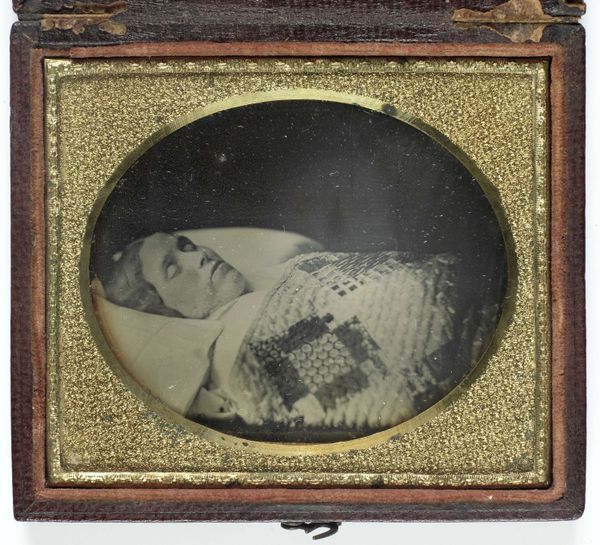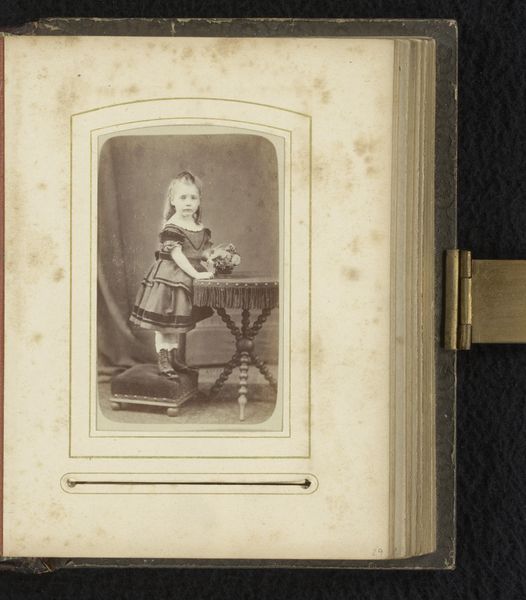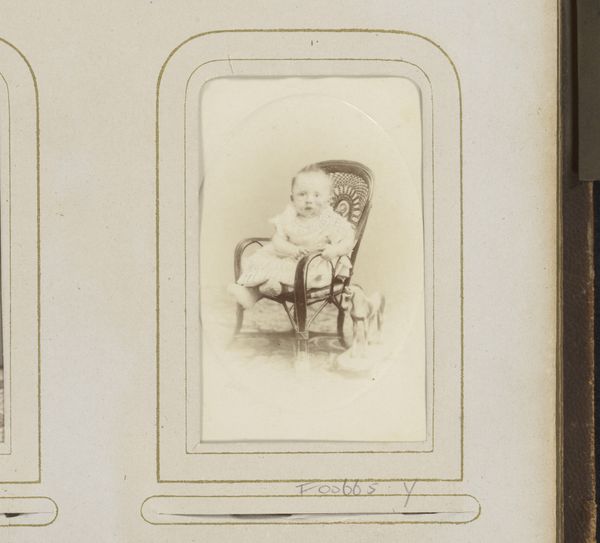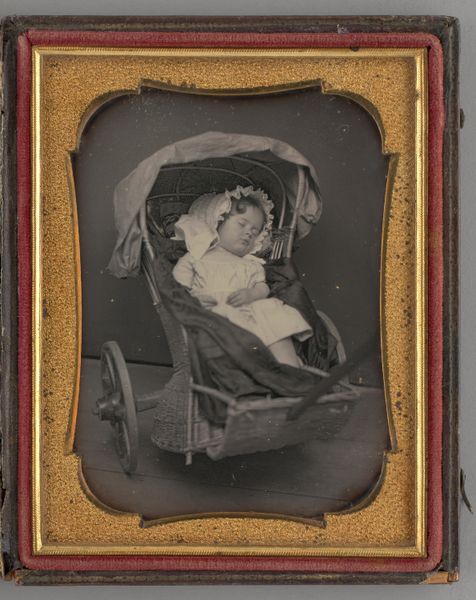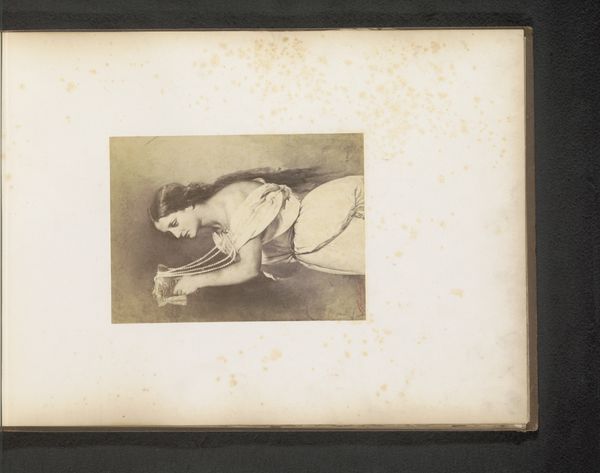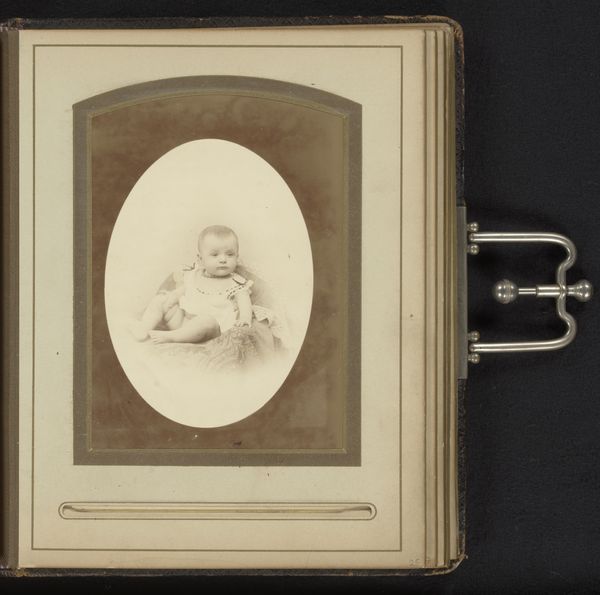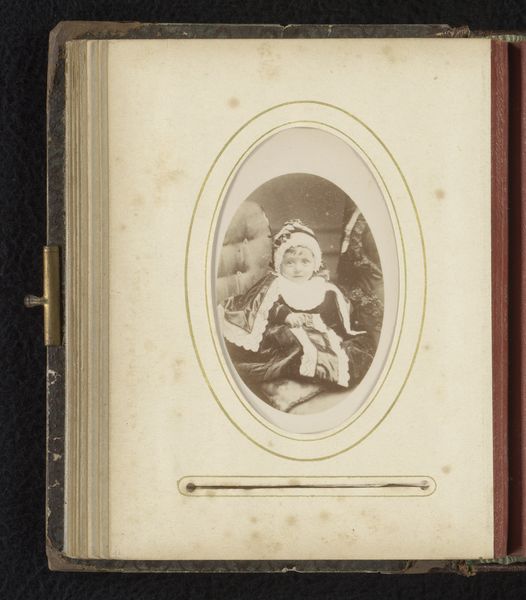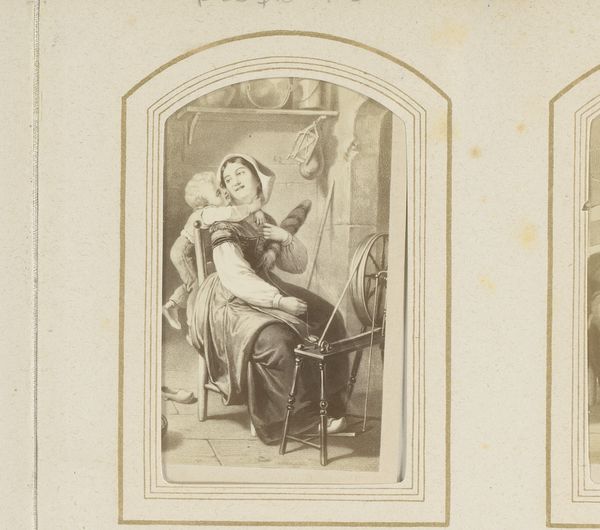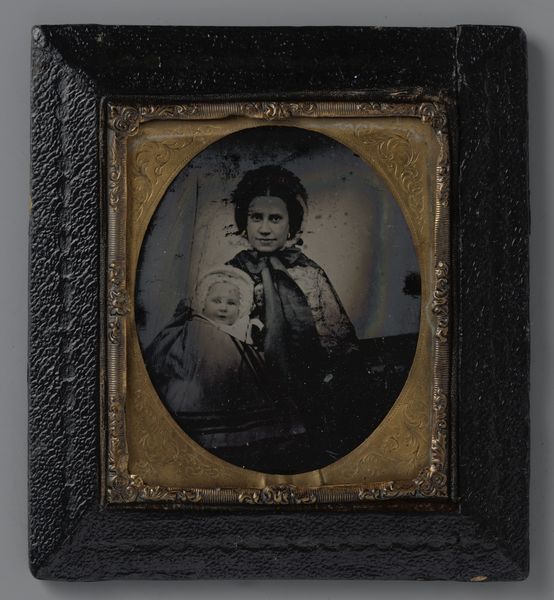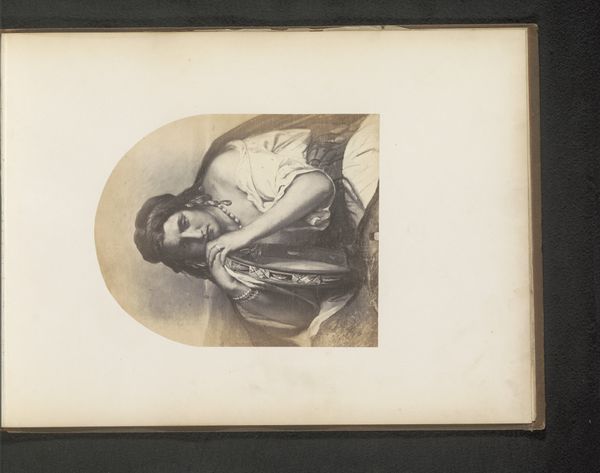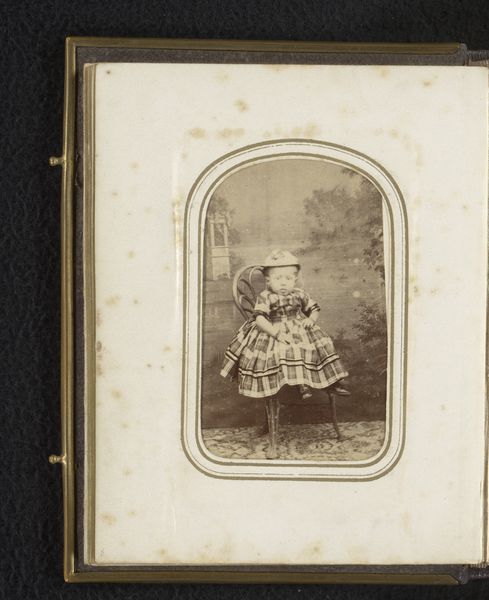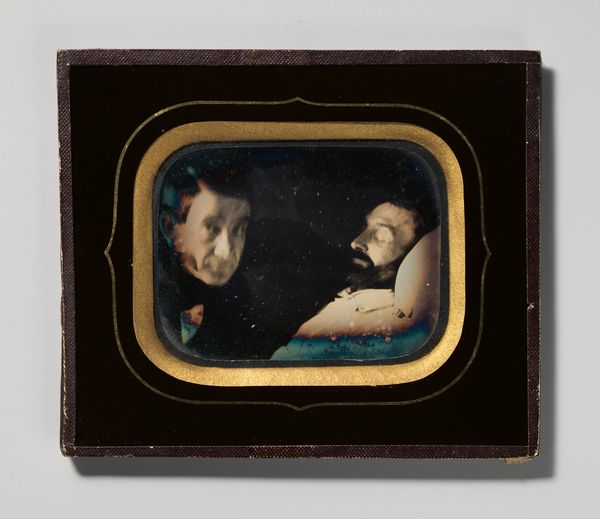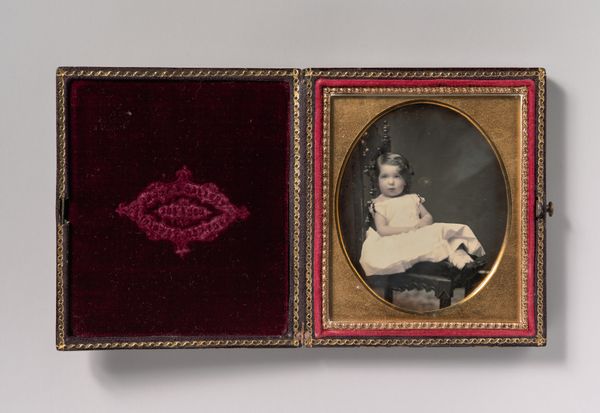
daguerreotype, photography
#
portrait
#
16_19th-century
#
daguerreotype
#
photography
Dimensions: 8.3 × 7 cm (each plate); 9.4 × 8.2 × 2 cm (case)
Copyright: Public Domain
This photograph of an unidentified child was made using the daguerreotype process, one of the earliest forms of photography, which peaked in popularity between 1840 and 1860. This durable image was made on a silver-plated sheet of copper, polished to a mirror finish, and then treated with fumes to make it light-sensitive. After being exposed in a camera, the image was developed by mercury vapor and fixed with a solution of sodium thiosulfate, then sealed behind glass to prevent tarnishing. The case and decorative gilt frame are also important; a daguerreotype was an expensive luxury, and this housing added considerable value. These photographs were widely accessible to the middle classes and marked a major shift in social accessibility to portraiture. The image would have been treasured as a memento, reminding us of the importance of materials, making, and social context in understanding the full meaning of an artwork.
Comments
No comments
Be the first to comment and join the conversation on the ultimate creative platform.

